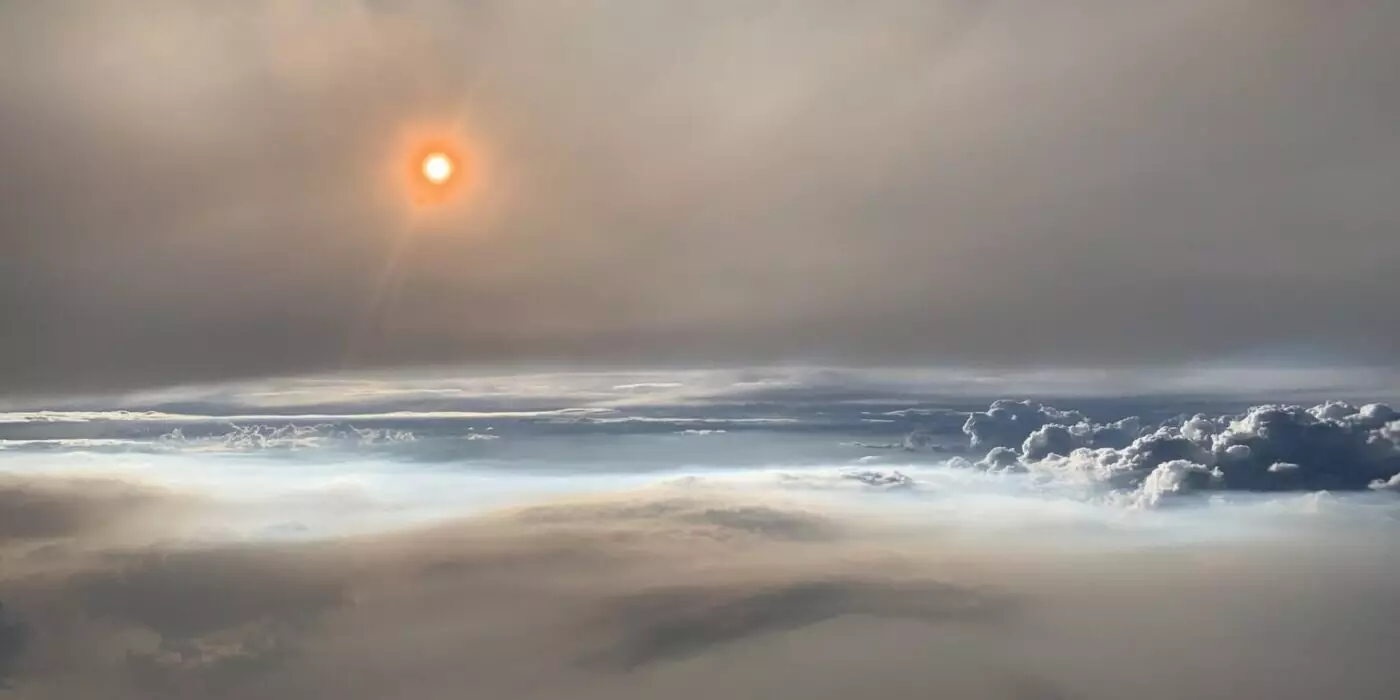As global temperatures continue to rise, wildfires are becoming more prevalent and intense than ever before. This marked increase in fire activity is not merely a natural phenomenon; it represents a significant shift in our ecological landscape, driven largely by climate change. Among the myriad of harmful byproducts released from these wildfires, black carbon stands out for its potency as a short-lived atmospheric warming agent. What makes black carbon especially concerning is its profound ability to absorb sunlight, thereby contributing significantly to atmospheric warming.
Emerging from the crucible of high-intensity fires, black carbon’s influence is magnified through mechanisms that remain poorly understood. A particularly insidious aspect of wildfires is the formation of pyroCumulonimbus (pyroCb) clouds, which serve as powerful conduits for dispersing smoke and particulates into the upper limits of the troposphere and lower stratosphere. Understanding the complex interactions between black carbon generated from these towering clouds and global climate patterns is an urgent scientific pursuit.
Groundbreaking Research from Washington University
Recent findings from the research team at Washington University in St. Louis’ Center for Aerosol Science & Engineering offer significant insights into the specific properties of black carbon produced by pyroCb clouds. Led by Rajan Chakrabarty and his former student Payton Beeler, this study, published in *Nature Communications*, dives deep into the intricacies of black carbon’s behavior in the upper atmosphere. Utilizing airborne measurements taken during the 2019 FIREX-AQ field campaign, the researchers provided critical data on how black carbon from intense wildfire events differs from that generated by smaller fires or urban activities.
What sets this research apart is the meticulous approach taken to assess black carbon at the particle level. Chakrabarty’s team examined not just the mass of black carbon but also the thickness of organic coatings on individual particles—essential parameters that could substantially affect how these particles interact with sunlight. Their findings revealed that black carbon emitted from pyroCb clouds absorbs twice as much visible sunlight compared to particles from smaller sources, underscoring the alarming warming potential of pyroCb-produced black carbon.
Implications for Climate Modeling
The newfound understanding of black carbon’s absorption properties carries significant implications for climate models. The study’s innovative use of a particle-resolved optics model allows for a nuanced understanding of light absorption dynamics, providing key data that could reshape predictions about stratospheric warming. Climate models traditionally overlook such granular measurements, yet they are essential for accurately quantifying the effects of black carbon and its role in altering atmospheric chemistry.
As pyroCb clouds are responsible for a noteworthy portion of global black carbon in the lower stratosphere—contributing between 10% to 25%—the ramifications of this research extend well beyond local or regional analyses. With black carbon from these clouds recently traveling across continents and persisting for months, their influence on planetary-scale climate dynamics cannot be overstated. Such insights urge the scientific community to reevaluate existing models and adapt them to incorporate the unique properties of black carbon from pyroCbs.
Addressing the Knowledge Gaps
Despite the progress made, Chakrabarty emphasizes that there remains a critical need for further field measurements and direct assessments of pyroCb black carbon light absorption. With climate change bringing about more unpredictable wildfire events, the scientific community must not only grasp existing knowledge but also proactively close the gaps in our understanding. Continuous research is vital for establishing more accurate climate models that can effectively forecast trajectories of warming and atmospheric changes.
The trajectory of our planet’s climate increasingly hinges on how well we can quantify and comprehend the dynamics of substances like black carbon in the atmosphere. As wildfires continue to devastate large areas, the knowledge gleaned from studies like Chakrabarty’s becomes essential in shaping policies and strategies for mitigating the impacts of climate change. The evidence is mounting; urgent action is required, and scientific inquiry will be at the forefront of that response.

